|
User
Reviews 3
Approval 97%
Soundoffs 20
News Articles 11
Band Edits + Tags 129
Album Edits 442
Album Ratings 2351
Objectivity 75%
Last Active 07-18-14 2:19 am
Joined 01-14-09
Review Comments 3,828
| Sputjazz: Steppin' Out
Since I made my other jazz list, I have seen many more people with an rinterest in jazz here rron sputnik, and people are generally giving out more rvaried recommendations which is a rrgood thing. People are expanding rtheir tastes, but still I find many have an aversion to ravant rgarde and rfree jazz. Whether they don't like it, don't know where to look, or just rraren't rcurious because they haven't been exposed to it, I'm here to help. rHere is a guide of rsorts, rthat will hopefully shed some light for those who rdon't know anything at all, or give rfurther rrecs to those with an interest ralready. | | 1 | | The History
Some blame that kid from Texas (Coleman), some blame the civil rights
movement, and some just blame the 60's, but really, the avant garde, the 'new
thing', had a number of contributing factors. Here is a brief stylistic timeline. | | 2 | 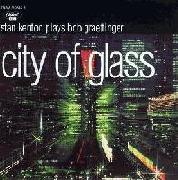 | Stan Kenton
City of Glass: Stan Kenton Plays Bob Graettinger
We begin in 1951, where a composer by the name of Bob Graettinger had been heading towards Gyorgy Ligeti style
material. Graettinger's compositions were almost not jazz, except maybe for the fact that they were
played by a big band. Third stream was the name the style would take; an
alternative 'stream' to jazz or classical. Graettinger was certainly not the first or
only to try combining jazz and classical, though few were as successful
(artistically, that is). While he was not a direct influence on many avant garde
musicians, he showed that the experimentation in jazz was indeed there, and
very early on. Not many were as 'out' as he was at that stage. | | 3 |  | Charles Mingus
Pithecanthropus Erectus
A familiar face, and another man known for his composition prowess. Back in the
mid 50's, Mingus was toying with ideas that would become the norm in the post-
bop realm throughout the 60's; dueling soloists, noisy sax playing, and a balance
between the composed and the free. He was essentially just playing hard-bop at
this point, but that edge was still there. | | 4 |  | Cecil Taylor
Jazz Advance
In the 50's, there was nobody even close to the intensity of this man's playing.
Actually, you could make a case for that now also. Before saxophonists were
overblowing like crazy, Taylor was just plain ol' beating the shit out of his piano,
with a kind of mad virtuosity and creativity that is seldom seen. This early
recording finds him struggling to connect with the bop idiom, and he certainly
stands out next to the other musicians. | | 5 |  | Sun Ra
Jazz in Silhouette
Another great jazz personality, the ever crazy Herman Blount, aka that guy that
thinks he's from Saturn, Sun Ra. Well, he wasn't sounding all that otherworldly at
this point, but if aliens were trying to imitate late 50's big band and bop, this is
probably what it would sound like. That experimental attitude is there, but it's still
trying to shake off those shackles... | | 6 | 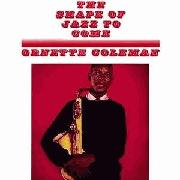 | Ornette Coleman
The Shape of Jazz to Come
And finally, those shackles would indeed be shaken off, in 1959 by a boy from
Texas, showing the New York guys how to party. Prophetic is an understatement.
Coleman's approach was free, yet controlled, and relied heavily and intense
interaction between all members of the group; a group with no harmonic
instruments. Yep, no chords here. The soloist was not the only one working hard
now; the whole group was churning with ideas, propelling the unit forward. This
release was not as intense or as visceral as what it inspired, though some (ahem,
Miles Davis) were bold enough to call it 'anti-jazz'. This album still remains brilliant
however, and is a perfect starting point for anyone looking for a foothold (starting
at the start makes sense). | | 7 | 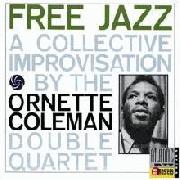 | Ornette Coleman
Free Jazz (A Collective Improvisation)
Another important title, which gave a name to the movement. This 1961 session
was a watershed moment in jazz; a truly 'free' jam, with many musicians. This is
where it all got noisy, and the intensity shifted up a gear. The group improvisation
methods employed by many others all started here. | | 8 | 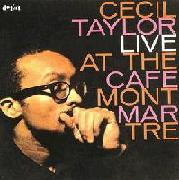 | Cecil Taylor
Live at the Cafe Montmartre
Speaking of intensity, that key-bashing maniac Cecil Taylor was certainly
frightening Americans with his uncompromising style, though like many others
later on, he found an adoring audience in Europe. These '62 sessions in Denmark
with Jimmy Lyons and Sunny Murray are moody, spontaneous, and at times,
punishing. This is certainly a good example of Taylor's mad brilliance, and also the
potency of the avant garde. | | 9 | 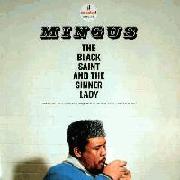 | Charles Mingus
The Black Saint and the Sinner Lady
One of the most popular jazz albums ever, and one of the best. Mingus showed
that while improvisation was continuing to blaze new ground in the free circles,
there was still plenty to explore compositionally. Odd arrangements, strange
form, and as moody as the man himself, Black Saint is essential listening for
everybody and anybody. | | 10 | 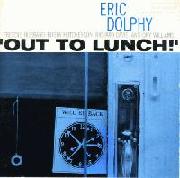 | Eric Dolphy
Out To Lunch
A man who really benefitted from playing with Mingus, was the strange multi-
instrumentalist Eric Dolphy. Audiences didn't really know how to take him; 'too out
to be in, and too in to be out'. His arrangements were a little odd, then on this
album, they became really quite strange. His soloing was always a little edgier than
his contemporaries, but here, he assembles a fantastic group of like-minded
musicians, creating one of the best albums jazz has to offer. This is essential stuff. | | 11 | 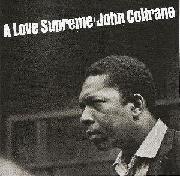 | John Coltrane
A Love Supreme
Coltrane had taken bop to its natural limits with Giant Steps, and was searching
for something more. His technically advanced playing had taken him this far,
but the next part of his journey was to be a spiritual one. He was getting more
and more adventurous live, and pumping out many records in the studio, but it
wasn't until he saw Albert Ayler that he had an idea of where he was heading.
Finally in '64, he reached the apex of his career, and headed into the studio
with the greatest quartet the world has seen (completely unbiased opinion) to
record this suite. A Love Supreme is certainly not the most out there, and
neither was Trane at this stage, but he had the fiery spirit. The most important
thing was that he gave the movement legitimacy. Being a highly respected jazz
figure-head, he became the torchbearer of this 'new thing', whether he wanted
it or not. Oh, and this is also the greatest album of all time. | | 12 |  | Albert Ayler
Spiritual Unity
Yes, the man who Coltrane listened to quite carefully. Ayler was hugely influential
to the new breed of sax player (who were at the moment under the spell of
Coltrane, funnily enough), with his raw tone and overblowing. His rhythm section
was also quite great; consider this the next in the chain after The Shape of Jazz to
Come, though a bit less sophisticated, but by no means lesser quality. | | 13 |  | John Coltrane
Ascension
Less than a year after A Love Supreme, Coltrane dived right into the deep end.
A large group session much in the same vein as Coleman's Free Jazz, Ascension
is a loud and raucous jam (well, two jams if you have the reissue). What was
most significant about this session, was the people he was playing with.
Coltrane really was the father figure, nurturing all of this talent. People like
Pharoah Sanders, Marion Brown, Art Davis, Freddie Hubbard and Archie Shepp
were all here along with the quartet to create the monumental racket. If A Love
Supreme was the foot in the door, this is him sprinting through it. | | 14 | | Sun Ra
The Heliocentric Worlds of Sun Ra
By this point, in the mid 60's, Sun Ra was all about the weird and abstract. It's
otherworldly, plain and simple. Sometimes fiery, sometimes spooky, usually just
fucking strange. The real Sun Ra had begun to turn jazz on it's head. | | 15 | 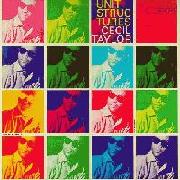 | Cecil Taylor
Unit Structures
Checking in again with Taylor, by this point he had honed his style and come up
with a classic. Not for the faint of heart, and therefore essential to the free jazz
movement. | | 16 | 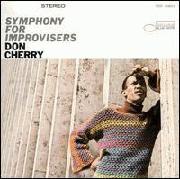 | Don Cherry
Symphony for Improvisers
Cutting his teeth with Coleman early in his career, Cherry was destined for great
things. Extended compositions, group improvisations, and most importantly, a
growing 'world music' influence, which would take greater shape throughout the
70's. | | 17 |  | Alice Coltrane
A Monastic Trio
So here we are in 1968, and the spiritual leader of the movement, Mr John
William Coltrane, has sadly died the year previous, leaving his wife to carry on
the cause. Her style had not yet matured into the meditative bliss of her later
works, but here we have her playing with other Coltrane alumni in a very
spiritual manner, carrying on the legacy... | | 18 | 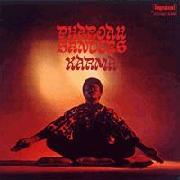 | Pharoah Sanders
Karma
That legacy would also be carried on by Pharoah Sanders. Spirituality was vital to
his music, and by combining the fiery passion of free jazz, with more meditative
jams, Sanders showed that the avant garde was not all about making as much
noise (and seemingly as little sense) as possible. A perfect starting point. | | 19 | 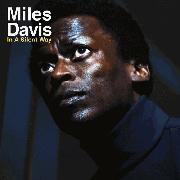 | Miles Davis
In A Silent Way
After spending some time away from the cutting edge of jazz, Miles was ready
for another big change. He had been working those modal ideas with his second
great quintet, and gradually becoming more adventurous (largely due to the
younger players in Tony Williams and Herbie Hancock). He had been listening to
more rock, especially Hendrix, and also soul and funk. Naturally, he headed
towards a more rhythmic kind of jazz, with more electric instruments, and a
new sound: fusion. In A Silent Way is perhaps the most important album at the
back end of the 60's. | | 20 | 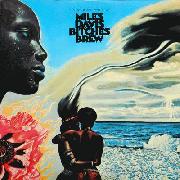 | Miles Davis
Bitches Brew
His next one was like a bomb dropping; people didn't know what hit 'em. There
was nothing else like it, and the studio was now a creative element. Abstract,
explorative, drugged out, and electrified. | | 21 | 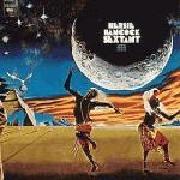 | Herbie Hancock
Sextant
Hancock certainly learned a great deal from Miles, and his love of the electric
instruments and spacey sounds certainly got a kick start there. What resulted was
an even wackier approach to fusion than Miles had on Bitches Brew, with spacey
soundscapes and electronic noodling abound. | | 22 | 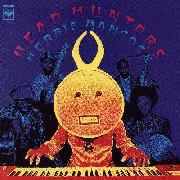 | Herbie Hancock
Headhunters
Taking his love of the synth, and the growing appreciation of funk in jazz circles,
Herbie went all out with the cheese and created the funkiest shit jazz had seen.
Many of you should know some of these songs already. After this, fusion kind of
stepped well away from jazz and turned to shit for the most part. | | 23 | | Europe
European audiences, perhaps due to already accepting radical advances in classical
music 50 years prior, were more than welcoming towards the avant garde jazz
players. Previously, the European influence in jazz was found in the cool jazz of the
west coast in the 50's, or in third stream, but by the late 60's, a free jazz
movement in Europe had begun, which blurred into 'free improvisation'. | | 24 | 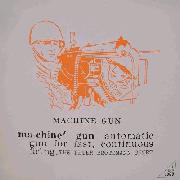 | Peter Brotzmann
Machine Gun
Aptly titled. This German saxophonist upped the intensity, and set the tone for
European craziness. | | 25 | | Evan Parker
Saxophone Solos
Another intense sax player, who has put out quality material for many decades. | | 26 | | Alexander von Schlippenbach
Globe Unity
Pianist who has also long been a force in Europe, playing with Evan Parker
many times. | | 27 | 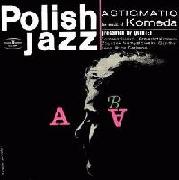 | Krzysztof Komeda
Astigmatic
The Polish had quite a little scene going throughout the 60's and 70's of avant
garde and post-bop, mostly due to this man. He had worked with Roman Polanski
scoring films, but his lasting contribution was this album. Very moody, distinctly
European (whatever the hell that means), and at times visceral. A great starting
point. | | 28 | 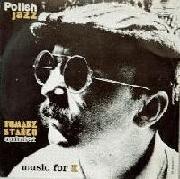 | Tomasz Stanko
Music for K
After Komeda died all to early, Stanko was the man to continue the style. Much in
the same vein as Astigmatic, though a little more free. | | 29 | | Manfred Schoof
European Echoes
A gathering of many important European players. Think Ascension or Free Jazz. | | 30 | | The Diving Board
So while all this crazy shit was going on, regular old bop was also getting a little
weirder, as the boundaries were breaking down. This period in the 60's is a
goldmine for amazing bop, and also a perfect point to start your journey into the
avant garde. I suggest you pick up all of these albums. | | 31 |  | Sam Rivers
Contours
An amazing debut. Freddie Hubbard especially is in fine form. One of my
favourites. | | 32 |  | Andrew Hill
Point of Departure
While everybody was getting more and more out, pianist Andrew Hill tore bop
apart from the inside. Complex compositions and abstract tonalities are the name
of the game. | | 33 | 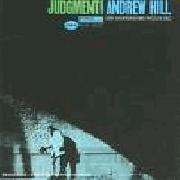 | Andrew Hill
Judgment! | | 34 | 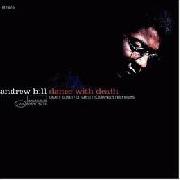 | Andrew Hill
Dance with Death | | 35 | 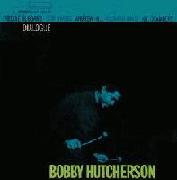 | Bobby Hutcherson
Dialogue
Man, vibraphones are so damn cool. He played with Andrew Hill, he played on Eric
Dolphy's Out To Lunch, but he shines strongest here. Great abstract compositions. | | 36 |  | Grachan Moncur III
Evolution
Not too many well known trombonists, especially in the avant garde, but Grachan
Moncur III showed the possibility of the instrument. | | 37 |  | Jackie McLean
Let Freedom Ring
Saxophonist who played with Mingus early on, who straddled the line between
bop and avant garde. These few albums are fantastic starting points. | | 38 | 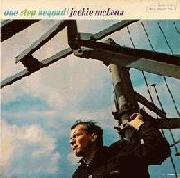 | Jackie McLean
One Step Beyond | | 39 | | Jackie McLean
Destination... Out! | | 40 |  | Archie Shepp
Fire Music
Kind of a deranged attempt at avant garde, but still rooted in bop. | | 41 |  | McCoy Tyner
The Real McCoy
Post-Coltrane greatness for the influential pianist. | | 42 |  | Wayne Shorter
Speak No Evil
The man that would make a great pairing with Miles, and go on to be a big part
of the fusion movement. Here, his greatest asset was his compositional
prowess. | | 43 |  | Rahsaan Roland Kirk
The Inflated Tear
Dude was mad crazy, playing multiple saxophones at once. Essentially he was
just a really weird bop player, very quirky. | | 44 |  | Miles Davis
Nefertiti
Miles' second great quintet from '65 - '68 is becoming my favourite period of his.
Amazing stuff, all too often overlooked by newer fans. | | 45 |  | Miles Davis
Miles Smiles | | 46 |  | Miles Davis
Filles de Kilimanjaro | | 47 | | The Deep End
Further recs, modern stuff, the AACM | | 48 | 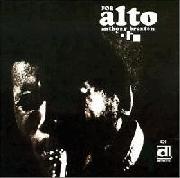 | Anthony Braxton
For Alto
Should have mentioned this guy by now. Hugely influential saxophonist, who
has released a ridiculous amount of material over the years. Usually quite
intense, he also liked to do solo recordings (something the Europeans began to
do en mass). He also belonged to the Association for the Advancement of
Creative Musicians, a very important community of musicians which included... | | 49 |  | Art Ensemble of Chicago
Les Stances a Sophie
An influential avant garde group, who were at times primal, sometimes noisy, but
always adventurous. This particular album is a soundtrack, which is a nice gateway
into their style. Very important group. | | 50 | 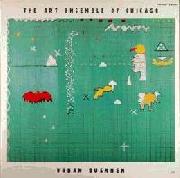 | Art Ensemble of Chicago
Urban Bushmen | | 51 | 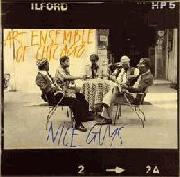 | Art Ensemble of Chicago
Nice Guys | | 52 | 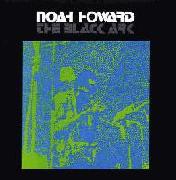 | Noah Howard
The Black Ark
One of my favourites. Ditched America early in his career, living well away from
the spotlight. He didn't enjoy a great deal of success, but left behind some
incredible music. This is the peak of the late 60's free jazz, with a great group. | | 53 |  | Bill Dixon
Intents and Purposes
An important man, not so much for his playing or releases, which were indeed
good, but because he organised the October Revolution in Jazz, in 1964. This led
to the creation of the Jazz Composer's guild, bringing many great underground
players together, and giving support to the avant garde. | | 54 | | The Jazz Composer's Orchestra
The Jazz Composer's Orchestra
Formed out of the Jazz Composer's Guild, the Orchestra was an organised mess of
ideas, featuring players like Cecil Taylor and Pharoah Sanders, with many other
younger players. | | 55 | | London Jazz Composer's Orchestra
Ode
Bunch of copy-cats. | | 56 | 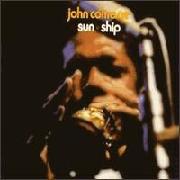 | John Coltrane
Sun Ship
When his quartet really heated up. One of his best. | | 57 | 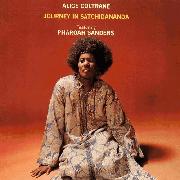 | Alice Coltrane
Journey in Satchidananda
Her best. | | 58 | | Black Renaissance
Body, Mind and Spirit
Really trippy fusion, with heaps of effects. | | 59 | 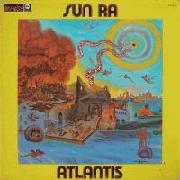 | Sun Ra
Atlantis
Lo-fi fusion | | 60 | 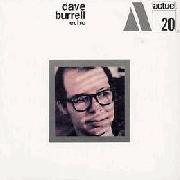 | Dave Burrell
Echo
Two tracks, showcasing the two sides of the avant garde; absolutely
cacophonous, and moody and abstract. | | 61 |  | Marion Brown
Porto Novo
Very big in France, he favoured group improvisations, sometimes including
vocalists. | | 62 |  | Miles Davis
Agharta
Getting further out there. | | 63 | 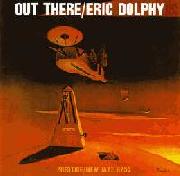 | Eric Dolphy
Out There
'Out' was the marketing term. Accessible early stuff from Dolphy. | | 64 | 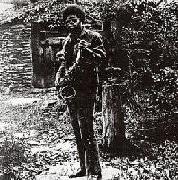 | Joe McPhee
Nation Time
He's been a part of the avant garde for a long time, and has pumped out many
albums. Free, but not too crazy. | | 65 |  | Pharoah Sanders
Elevation
More great jams | | 66 | 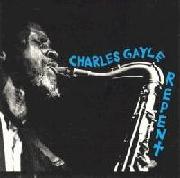 | Charles Gayle
Repent
Intense. One of the big names of the last couple of decades. Time for more
modern stuff. | | 67 | 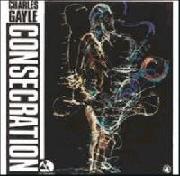 | Charles Gayle
Consecration | | 68 | 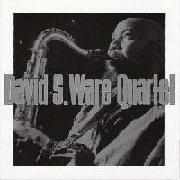 | David S. Ware
Godspelized
Another big names over the last couple of decades. Not hugely intense, he has a
really strong sense of melody, and keeps things from going too far out there.
Highly recommended. | | 69 | 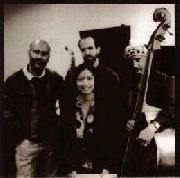 | William Parker
The Peach Orchard
Bassist who played with Brotzmann and Evan Parker early on, and David S.
Ware later, has been one of the strongest forces in keeping jazz alive. This also
happens to be one of my favourite albums ever. Moody, intense, modern. These
adjectives are getting old. | | 70 | | William Parker
O'Neal's Porch
Some more great stuff. Free, but not cacophonous. | | 71 | | William Parker
Painter's Spring
Trio work. | | 72 |  | William Parker
Double Sunrise Over Neptune
Accessible avant garde jams, closer to Pharoah Sanders or Alice Coltrance in the
'world music' influence. Trippy vocals too. Strong melodies, nice grooves, can't go
wrong. | | 73 | 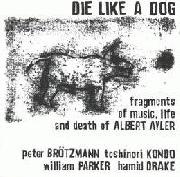 | Die Like A Dog Quartet
Fragments of Music, Life and Death of Albert Ayler
A gathering of fantastic musicians here. Very free, very crazy. | | 74 | | Charles Gayle, William Parker & Rashied Ali
Touchin' on Trane
A trio of epic proportions paying tribute to the greatest. | | 75 | 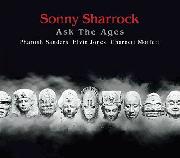 | Sonny Sharrock
Ask the Ages
Crazy guitarist, who brought distortion to jazz in a big way. | | 76 | 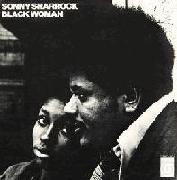 | Sonny Sharrock
Black Woman | | 77 | 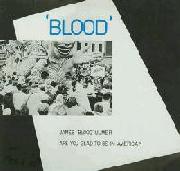 | James Blood Ulmer
Are You Glad to Be in America?
Guitarist with a somewhat spastic style. Sort of fusiony, out there, sorta funky
free jazz. Also tried doing some blues albums (which fucking sucked). | | 78 | 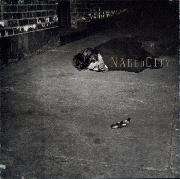 | John Zorn
Naked City
Obligatory mention of this cooky dude and his fucked up
grind/country/blues/avant garde jazz. | | 79 | | Otomo Yoshihide's New Jazz Orchestra
Out to Lunch
Japanese tribute/interpretation, bringing in a modern touch, with electronics
also. If you thought the original was strange... | | 80 | 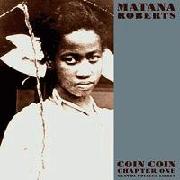 | Matana Roberts
Coin Coin Chapter One - Gens de couleur libres
Came out this year. Yes, this shit is still alive and kicking. She's also a member
of the previously mentioned AACM. If diversifying your end-of-year list is
motivation to check some of this stuff out, then I guess that's a good thing.
Start here and work back. | |
liledman
08.25.11 | time to step out sputnik | Maniac!
08.25.11 | If this is not featured, then the staff are terrible people. | WeepingBanana
08.25.11 | man i listened to a bunch of these guys when i took a Jazz History class. i dug a lot of them
i feel like keith jarrett should be here somewhere though | Apollo
08.25.11 | This is insane. Well done dude. Don't know much about jazz but I used to love it when I was like 10-13, before I got into metal basically. Haven't really looked at it since but this may inspire to change that. | alachlahol
08.25.11 | erg free jazz | Deviant.
08.25.11 | "If this is not featured, then the staff are terrible people."
Already requested | liledman
08.25.11 | @weepingbanana hmm i think the most important work jarrett did in the avant garde was playing with miles. his solo stuff is more of that classical influenced jazz, but not particularly avant garde.
@maniac they better i just spent ages typing this shit | AngelofDeath
08.25.11 | Great, great list. I listened to this great jazz album yesterday by Jan Johansson called Jazz på Svenska. It's jazz renditions of Swedish folk music done with just piano and upright bass. | liledman
08.25.11 | free your mind alach | taylormemer
08.25.11 | Well of course it's going to get featured. Otherwise, he wouldn't have made it duh. | liledman
08.25.11 | sounds interesting angelofdeath, ill look into it. | liledman
08.25.11 | only make lists for the feature i count my worth by those diamonds up there | Deviant.
08.25.11 | "only make lists for the feature i count my worth by those diamonds up there"
Imagine how much those black diamond riddled reviews from Sputnik's past are worth | alachlahol
08.25.11 | free my mind what the fuck is this the matrix? take the blue pill to return to your world of traditional bebop and modal jazz... take the red pill and ill show you how far the free jazz hole goes | omnipanzer
08.25.11 | effort: A+ | Sanders
08.25.11 | Showing you how far the free jazz hole goes sounds kinky. | liledman
08.25.11 | free jazz is quite erotic | Jozh
08.25.11 | This is gonna get featured. | Maniac!
08.25.11 | I thought I was Sput's resident Jazz-head, but liledman has won that title by far.
I remain the Blues-head, though. | bloc
08.25.11 | Great list.
Hopefully a few of these will help inspire my jazz band. | Apollo
08.25.11 | "I remain the Blues-head, though"
No Brandon, you remain the gay guy who gives really good head | Deviant.
08.25.11 | Which apparently makes you the othe gay guy apollo ;) | Spec
08.25.11 | Great list. Will be featured. | FatChickIrl
08.25.11 | What a sexy, juicy list. | LegendofPittman
08.25.11 | Bookmarked, this is fantastic. | MO
08.25.11 | Such a good list holy shit, lots of great stuff up here. I recently checked out a jazz band called Panzerballett's self-titled. Check it out if you haven't, really unique jazz. | Maniac!
08.25.11 | No Brandon, you remain the gay guy who gives really good head
^ you still owe me $50 | Bloodbirds
08.25.11 | Lots of brilliant stuff out here. When I started out, you and Chrisjon89 were the only guys commenting on my jazz lists. Then I read your big big list and spent 2 months on that stuff. Now I can proudly say I am familiar with 90% of this stuff. Great job mate. | Jozh
08.25.11 | Told you it'd get featured. | singthewordhope
08.25.11 | excellent list man, very well thought out, this must have taken a long time to put together.
the hype around the new matana roberts record has been irritating me though, too many kids who don't know shit about jazz running around jocking it and trying to look sophisticated | TheArkitecht
08.25.11 | Awesome list, my jazz collection isn't as big as I want it to be, mostly just have Louis Armstrong and Miles Davis with a few others here and there. But fuck free-form jazz. | luschlotz
08.25.11 | thank you. I really do mean it, THANK YOU, first for introducing people to free jazz. I knew a bit, but wow, I know only half of this albums.
I saw the needledrop review for 80, but cant find it anywhere. . . | MaskAtTheMasquerade
08.25.11 | bookmarked. im gonna go on a jazz spree when my schedule gets a bit lighter aww yeea | Relinquished
08.25.11 | great list, my father passed on some of these on vinyl to me | Hyperion1001
08.25.11 | Sick list but it needs some Bill Evans.
I love Don Cherry as well. | Winesburgohio
08.25.11 | Holy shit this list is phenomenal, kudos!
Really glad to see some Wayne Shorter on here, his solo stuff is invariably excellent. He deserves far more acclaim than he recieves :( | DoubtGin
08.26.11 | great and informative list, but I doubt many will check out the albums on here | liledman
08.26.11 | thanks guys, and doubtgin im just hoping that it will intrigue a few people at least.
@wineburgohio his work through the 60's is great, i think hes one of the most important composers of the bop period. shame many just think of him as 'the fusion guy'.
@singthewordhope yeah i get what you mean. theneedledrop really brought it to a wider audience, one that may not really know much, but hey, if thats a starting point for some point then great. i included it here for that very reason, hopefully some will recognise it and check it out. | ShadowRemains
08.26.11 | eddie dropping knowledge
nuthin' new
list rules btw | liledman
08.26.11 | bitches gotta know
cheers dude | ShadowRemains
08.26.11 | cheers | patroneyes
08.26.11 | no love for cecil's "conquistador!"?
great list regardless | liledman
08.26.11 | yeah i would put it but already had a few of his albums here. thats one of my favourites of his actually. | telebyrd
08.26.11 | Best List in Forever, Cheers | foreverendeared
08.26.11 | Yeah sweet list. Lots of knowledge bombs. | Chrisjon89
08.26.11 | Pharoah Sanders is the man. Awesome list | eggsvonsatan
08.26.11 | Could someone please give me a good starting point with Sun Ra. There's a local DJ who plays a lot of Sun Ra stuff that I like. I listened to Atlantis, but couldn't really get into it.
Thanks, yall. | eggsvonsatan
08.26.11 | Also there's a great Ken Burns documentary called Jazz on the netflix instant watch, for anyone who's interested. | luschlotz
08.27.11 | That documentary i surprisingly good, although it doesnt touch much of these guys | bigmoon
08.27.11 | jazz sucks | liledman
08.27.11 | for sun ra i would suggest lanquidity, its kind of closer to an in a silent way type vibe, instead of the crazier stuff he has done.
ken burns basically thinks jazz died in 1960, mostly due to these artists. | coneren
08.27.11 | do you guys really want this fist? how far? | liledman
08.27.11 | youre not drunk enough to post here | Chrisjon89
08.27.11 | downloading that Sun Ra album right now for some late night listening | liledman
08.27.11 | perfect choice for that | sniper
08.27.11 | fix your fucking r's man. | 204409
08.27.11 | Bro have you listened to Austin Peralta's Endless Planets. | liledman
08.28.11 | yeah that album is pretty sweet | danielito19
08.28.11 | holy crap DFel sighting | thebhoy
08.29.11 | good shit liled... I wrote an essay for my American History class last year that correlated the early history of jazz with the rise of American nationhood and soft-power in the post-war political climate. Perhaps I will post some of it as a blog hmmmm | pizzamachine
08.29.11 | I'd read it | liledman
08.30.11 | sounds awesome keelan id read it for sure | twlight
10.17.11 | epppic list, bookmarked | jefflebowski
12.18.11 | the best sputnik list i've ever seen.
Still needs late-period mingus though.... | liledman
12.19.11 | thanks for the hyperbole ;)
yeah i probably could have included more of his stuff, seeing as i had extra spots. it would be 'diving board' stuff though, specifically let my children hear music. | Chrisjon89
12.19.11 | 42 is kick-ass. I've got six of his albums that were recorded in 64/65 and all but one completely rules. It's ridiculous. I put off listening to him for ages cos I wasn't that keen on Nefertiti and read that he composed alot of that stuff. Big mistake.
Also, bump. | jefflebowski
12.19.11 | yeah, let my children hear music is what i was thinking, but i also have a lingering love for changes 1 and 2, which are excellent and accessible compared to his other late-period stuff | liledman
12.19.11 | hell yeah chris, shorter was such a large part of that group, such a strong composer. footprints, nefertiti, e.s.p., and all of his compositions he was playing on his solo albums... dayumn. i love playing his stuff so much. and let me guess... is that one album which doesnt completely rule is 'the all seeing eye'?
i still havent heard both the changes album jefflebowski, downloading them now. havent put much effort into mingus' discog compared to miles and trane, i am ashamed to admit. | Chrisjon89
12.19.11 | fuck, just wrote a response and it didn't work.
yeah man I was missing out. Speak No Evil/Juju/Night Dreamer in particular are amazing for me. He's got some top shelf sidemen too. The one that doesn't rule yet is Et Cetera after one listen. Still missing The All Seeing Eye and Schizophrenia.
I also got Native Dancer which is kinda daggy maybe but still pretty good. Miles Smiles is sweet too so I guess I need more of Miles from that era now too. | liledman
12.19.11 | that whole miles era with e.s.p., miles smiles, nefertiti etc is just awesome.
i mentioned the all seeing eye just because it sticks out just as a bit more intense. really cool stuff though. interesting horn arrangements, and its a suite so pretty cool conceptually. as for the sidemen, it just seems that everybody who was anybody was playing as many blue note albums as they could during the early - mid 60's. so many all-star line-ups. oh man so much good shit. | Chrisjon89
12.19.11 | I'd probably dig it. I'll get that next, then more Miles. Some of those melodies in the heads burnt onto my brain straight away. It was like I'd heard them before but then all of a sudden they'd zig when I expected them to zag, which made it even more interesting to me. I dunno how to explain it really but it wasn't a fluke cos it happens on all these Shorter albums. | liledman
12.20.11 | Yeah he has a great sense for melody, especially given his penchant for unusual harmony also. Miles smiles is so gooood i just love all those players. Tony williams on all those albums just rules. His ride is like half the fucking mix and it works. | liledman
12.26.11 | just made this list on rym: http://rateyourmusic.com/list/liledman/free_avant_jazz_albums_you_need
more stuff, will be updated forever. | Tyrannic
12.26.11 | thank you for making this, i'm waiting on my buddy to turn 21 so we can hit up some jazz clubs in chicago. have you heard of Walk East? they're a smaller outfit but what i heard was insane. | liledman
12.26.11 | i wish i was living in chicago/new york for an actual jazz scene; melbourne hasnt got much at all. never heard of those guys before, but ill keep an eye out, thanks man. | Tyrannic
12.26.11 | no problem, i was kind of hoping chicago had a jazz scene, but i'm out of the loop on the whole genre. | liledman
12.26.11 | check out anthony braxton and the AACM. no jazz scene in the united states is what it used to be, but that was one hell of a group of musicians back in the 60's, 70's etc | VlacDrac
07.30.12 | I am digging Out to lunch, I think it's good.
I like the Vibraphone. | YankeeDudel
12.23.12 | Just lettin ya know I went through all these and loved most of em. | Havey
12.23.12 | new Gayle is pretty good | MO
12.23.12 | liled is awesome | GiaNXGX
12.23.12 | was thinking the other day to make a list like this, with many obscure ensembles n stuff. Hmmmm, wonder if it'll get the attention it deserves. | liledman
12.23.12 | Good to hear Yankee.
Havey it is pretty sweet, though it doesn't have the same power for me as Repent.
Thanks dudes, though this list could always be a bit better, now that I look back on it. | Havey
12.23.12 | You should make a list touching on your favorite classical pieces, modern or not, I'm interested as to how that would turn out | Havey
12.23.12 | Also, have you heard the new Ahmad Jamal? (I'm guessing you're already familiar with his stuff) | MisterTornado
12.23.12 | king tears bat trip king tears bat trip king tears bat trip king tears bat trip | liledman
12.23.12 | I have actually been planning on doing a similar sort of "overview/introduction to" list for 20th century classical, and perhaps romantic period also. I have got time at the moment so I might get on to that. Haven't heard the new Jamal, had no idea that he was putting out new stuff. Guess I'll give it a look (and King Tears Bat Trip...?) | YankeeDudel
04.18.13 | this one is groovy too | MO
04.18.13 | one of the best lists ever on sputnik | YankeeDudel
04.18.13 | HALLELUJAH | liledman
04.18.13 | Feeling the love today thank you Yankee | osmark86
04.18.13 | well fuck me sideways, I'm glad this list surfaced. | liledman
04.18.13 | Check the RYM lists linked higher up for more good shit. | osmark86
04.18.13 | will do | ethixx
07.01.13 | BUMPPPPPPPP | liledman
07.01.13 | YEAH | Havey
11.10.13 | everyone should look into these two gems:
Johnny Dyani - Witchdoctor's Son
Mtume Umoja Ensemble - Alkebu-Lan: Land of the Blacks
such joy, such LIFE | liledman
11.10.13 | Oh yeah, I did check out Alkebu-lan. Good stuff. I'll get on the other one also. | Havey
11.10.13 | witchdoctor's son is soo good, the track Magwaza in particular makes me cry tears of joy
any good jazz releases in 2013? haven't seen much of interest | Keyblade
11.10.13 | Yeah Kausemus | Havey
11.10.13 | oh yeah still havent listened to that one, is it really jazz tho i remember it being tagged experimental and nothing else | Keyblade
11.10.13 | It's like dark jazzbient. Closest I could think of apart from F!O heh | JamieTwort
11.10.13 | "any good jazz releases in 2013?"
Peter Evans - Zebulon | liledman
11.10.13 | Yeah the Peter Evans one is alright... I haven't heard much from this year at all, let alone jazz. | JamieTwort
11.10.13 | Been a pretty good year for music for me. | Phlegm
10.23.14 | xx | Torontonian
06.05.15 | list is a great read. a lot of these sound really intriguing. |
|
